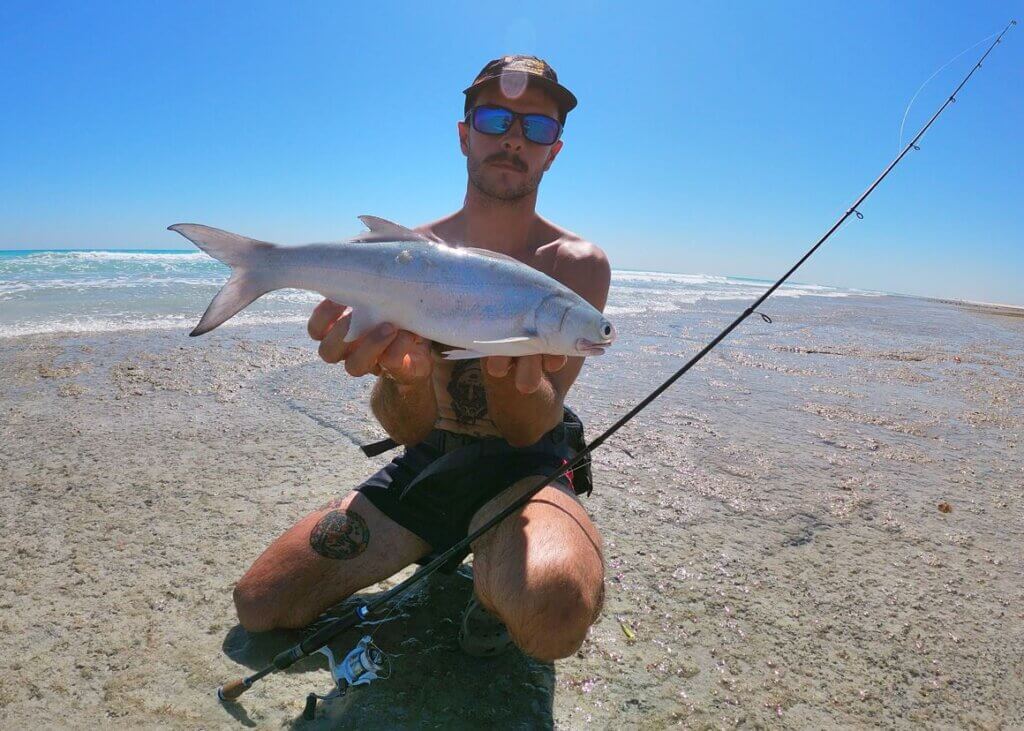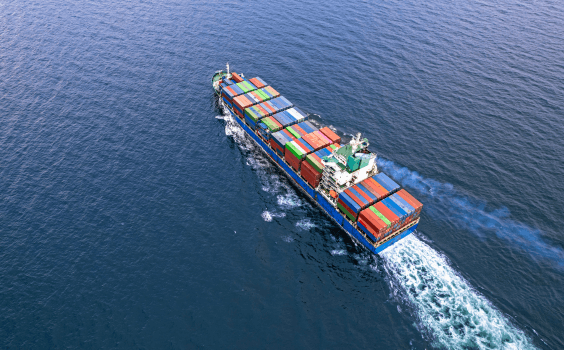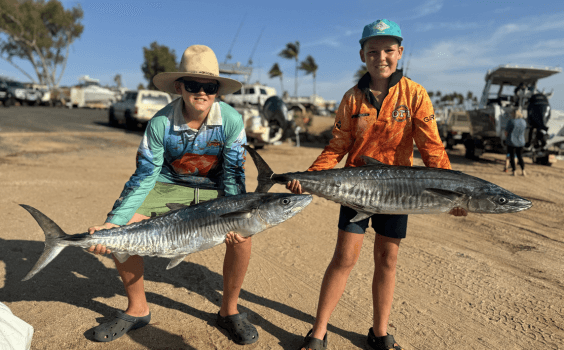Catching a bluenose salmon never leaves Western Angler editor Scott Coghlan blue in the face. The seasoned fisher loves catching the sportfish when he’s in WA’s north and the species is the focus of this week’s Scott’s Species, written exclusively for Recfishwest’s website.
Species: Bluenose salmon, Eleutheronema tetradactylum
Eating: 4 star
Description: Filaments behind gills make them easily identifiable. Blue salmon have four pectoral filaments, while threadfin have five.
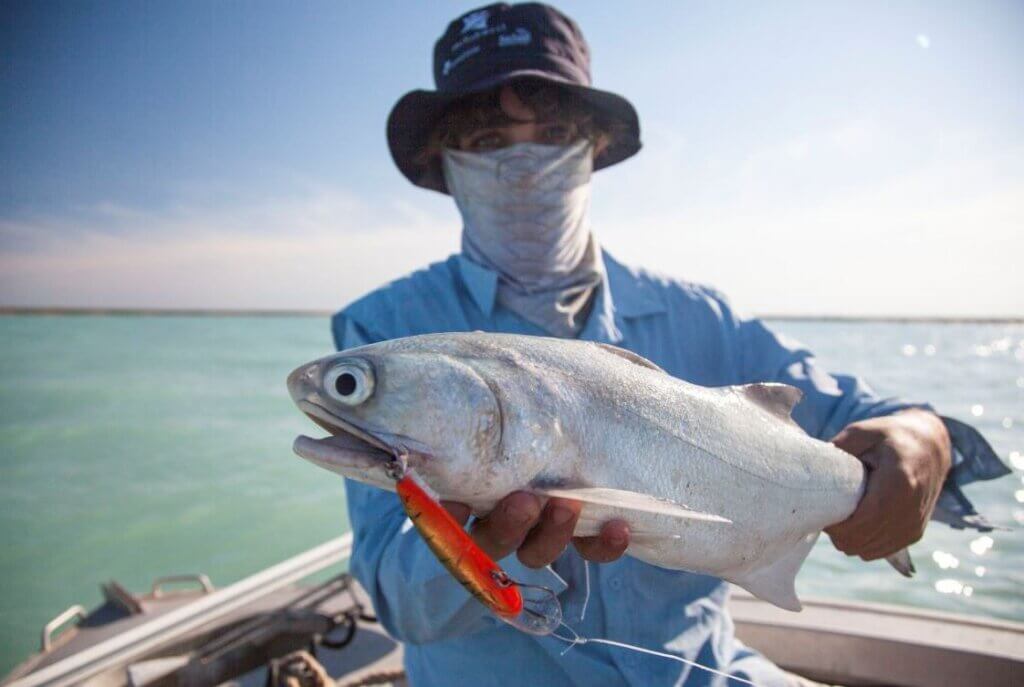
Something of a little brother to threadfin salmon, bluenose salmon, also called blue and blue threadfin, are nonetheless a fun sportfish in their own right. They are generally found from Exmouth north, but in recent years have been encountered much farther south at times.
We were also surprised to find a variety of blue salmon at the Cocos Islands. Broome is a stronghold for them, as they are caught regularly in Roebuck Bay, including in Dampier Creek and along Cable Beach.
Interestingly, although they appear a very mobile species, research has shown that there is little movement between local stocks, even when there is no obvious barrier to movement.
Some people call blues the tailor of the north and the comparison is apt, as they also turn up in groups and are a speedy fish that likes to pounce on unsuspecting baitfish.
On a recent trip to the Kimberley, we regularly had our barra sessions interrupted by fish smashing bait on the surface, and it inevitably turned out to be packs of marauding blue salmon.
Blue salmon grow to more than 1m and 15kg globally, but a maximum of about 80cm in WA waters.
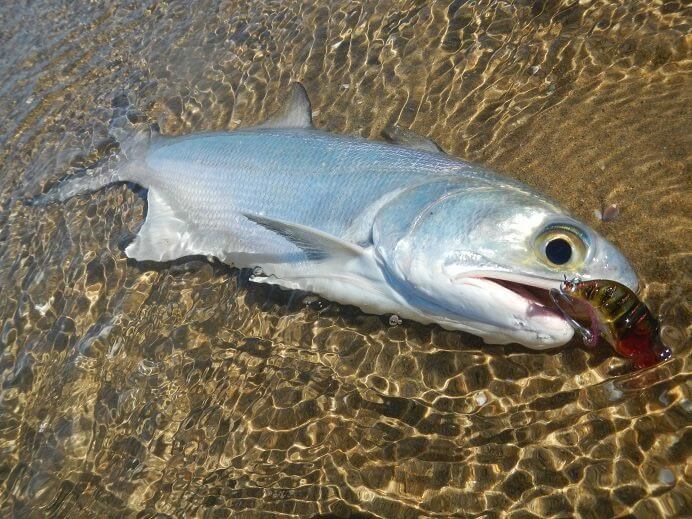
Most caught will be much smaller than that and 1kg to 3kg fish are most common.
They are a good fighter with speed and propensity to jump, again like tailor.
We’ve usually bumped into blue salmon in small creeks and shallow water, which is their favourite hunting ground.
This makes them a target for either shore or boat anglers.
They will happily take most baits and lures, although I would argue the latter approach makes the most of what they offer on the end of a line.
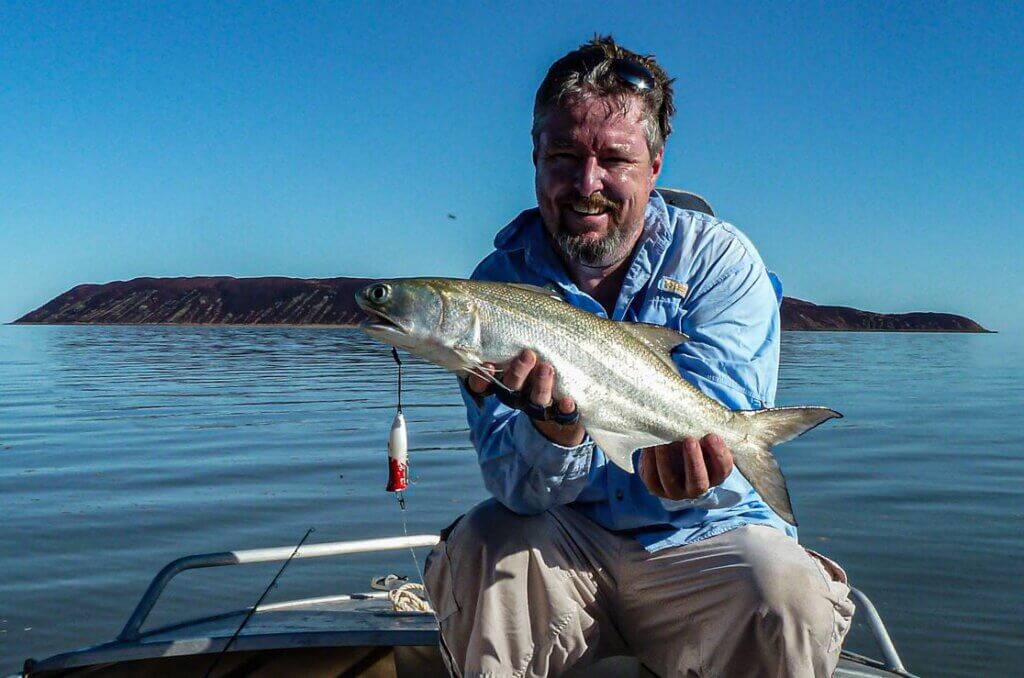
They aren’t usually fussy and will hit most lures, including bibbed minnows, stickbaits, soft plastics and vibes, as well as poppers.
Blues can also be a lot of fun on fly gear. They are often caught while casting lures for barramundi, as they often hold in the same locations.
Working lures fast is not a problem for blues as they are ferocious predators and aren’t deterred by hunting in dirty water.
They are usually a clean fighter so heavy tackle is not needed, and a 7kg-9kg spinning or baitcaster outfit appropriate for the type of fishing being done should be ample for catching blues.
Some slightly heavier abrasion resistant leader is also a good idea, especially given the possibility of hooking a barra or threadfin
Blue salmon are regarded as excellent eating, especially fresh, with tender white flesh and good-sized fillets with few bones.
